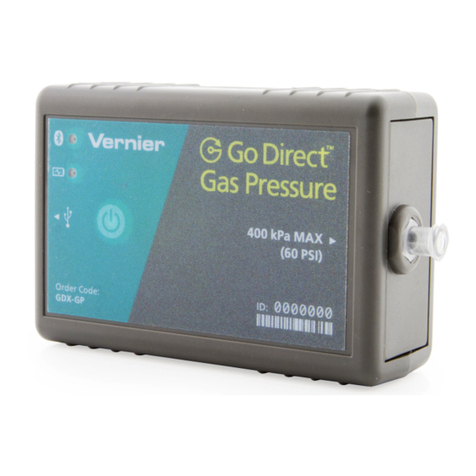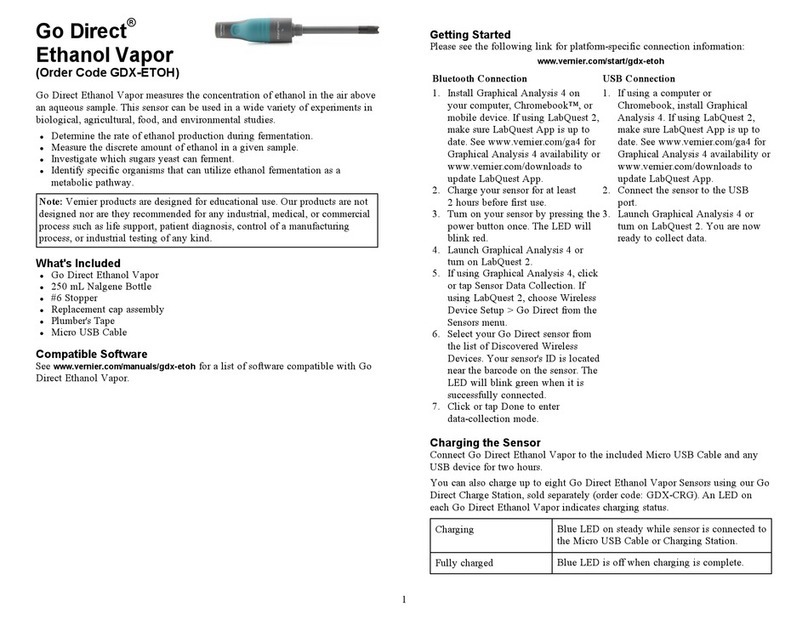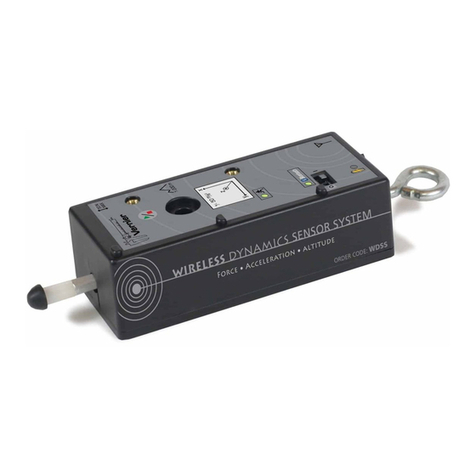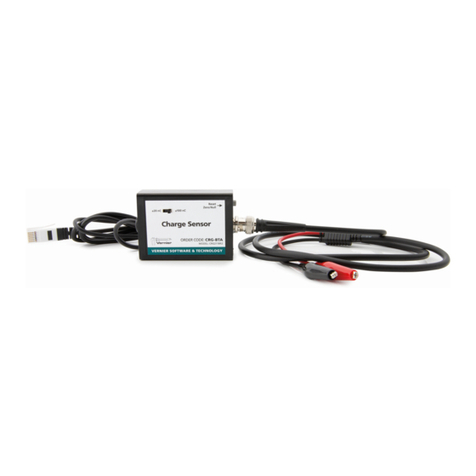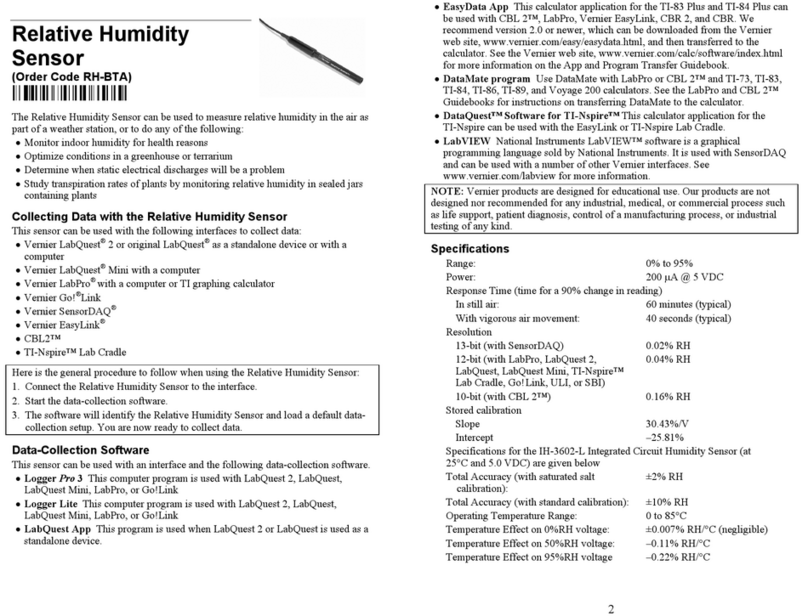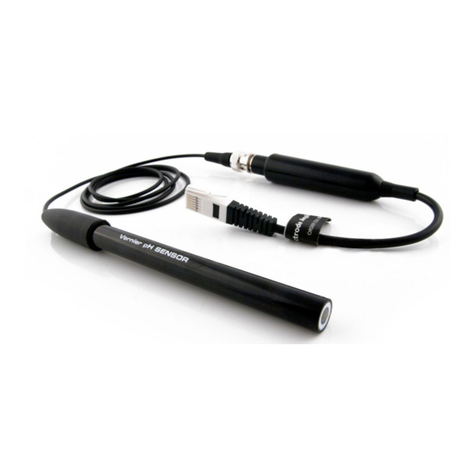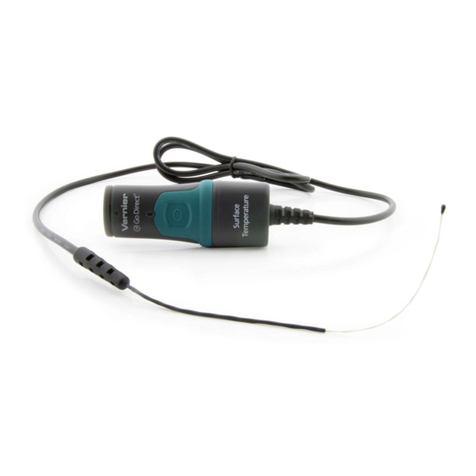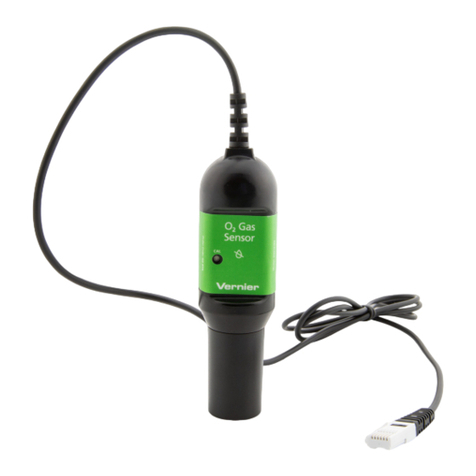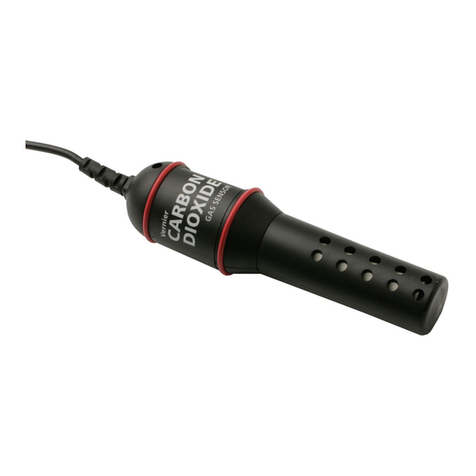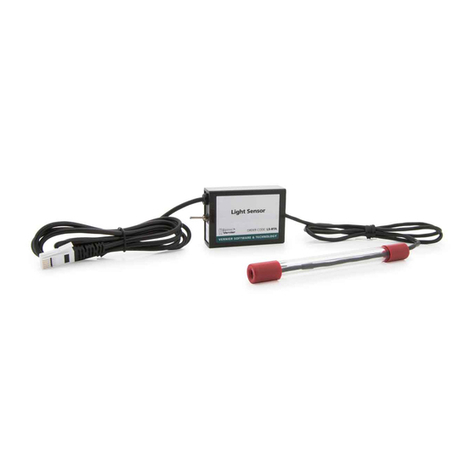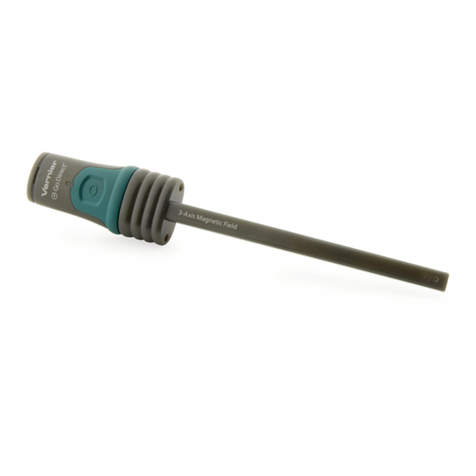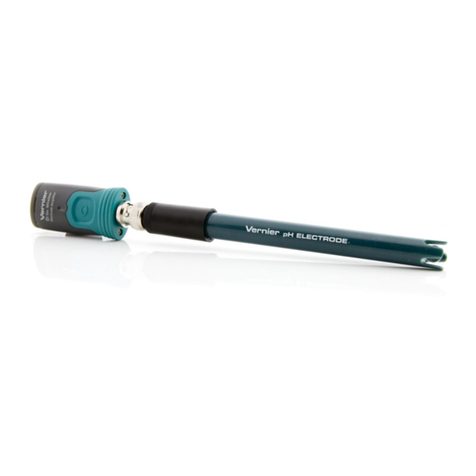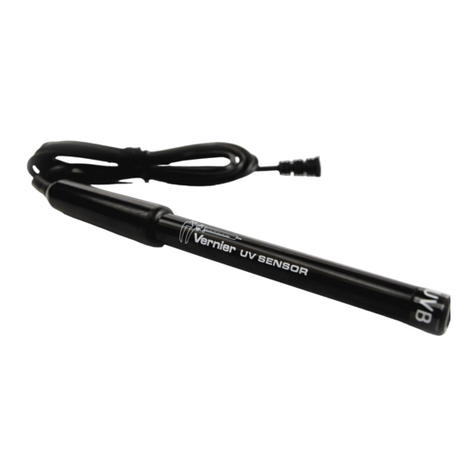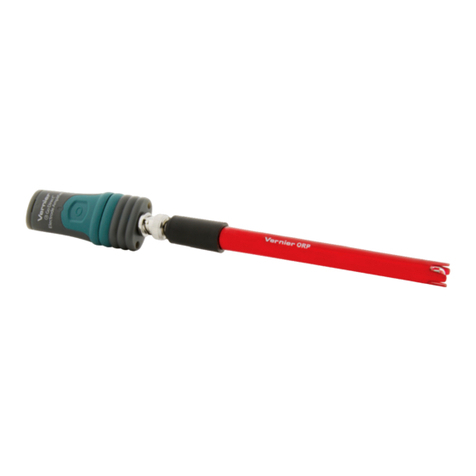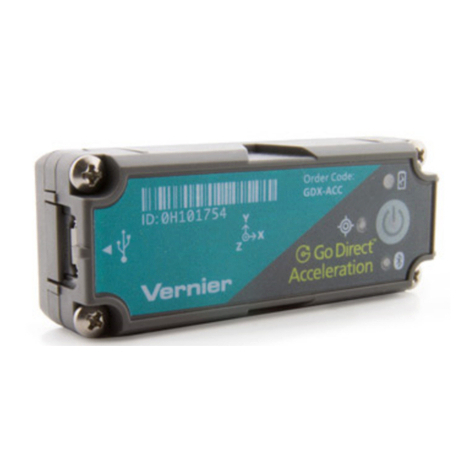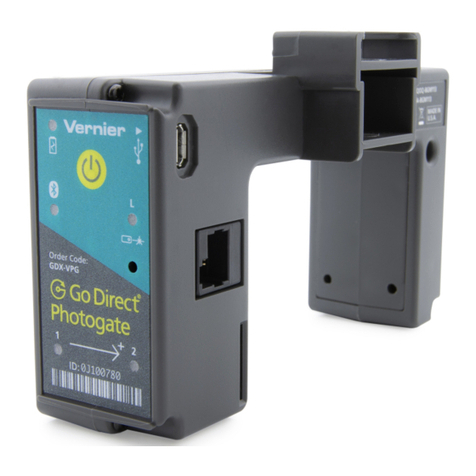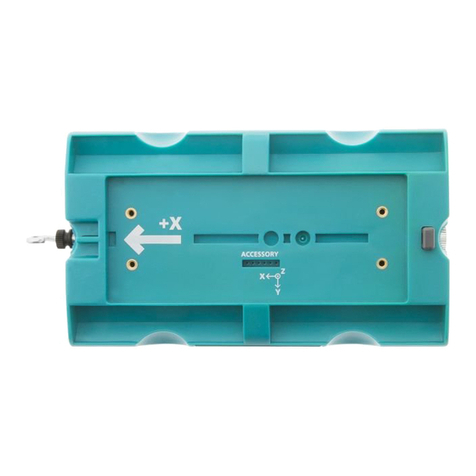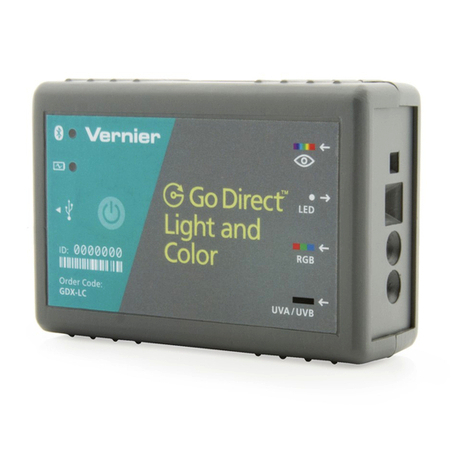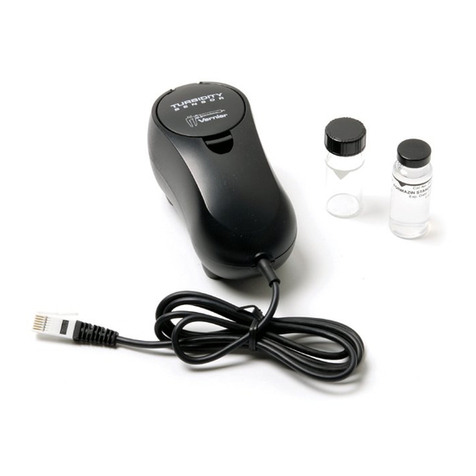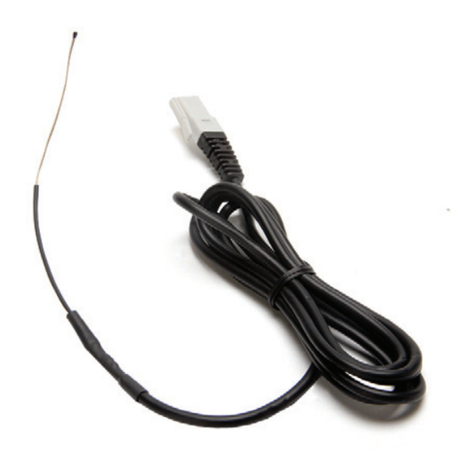
3
Warranty
Warranty information for this product can be found on the Support tab at
www.vernier.com/gdx-tc
General warranty information can be found at www.vernier.com/warranty
Disposal
When disposing of this electronic product, do not treat it as household waste. Its
disposal is subject to regulations that vary by country and region. This item
should be given to an applicable collection point for the recycling of electrical
and electronic equipment. By ensuring that this product is disposed of correctly,
you help prevent potential negative consequences on human health or on the
environment. The recycling of materials will help to conserve natural resources.
For more detailed information about recycling this product, contact your local
city office or your disposal service.
Battery recycling information is available at www.call2recycle.org
Do not puncture or expose the battery to excessive heat or flame.
The symbol, shown here, indicates that this product must not be disposed of
in a standard waste container.
Federal Communication Commission Interference Statement
This equipment has been tested and found to comply with the limits for a Class B digital device, pursuant to Part 15 of the FCC rules.
These limits are designed to provide reasonable protection against harmful interference in a residential installation. This equipment
generates, uses and can radiate radio frequency energy and, if not installed and used in accordance with the instructions, may cause
harmful interference to radio communications. However, there is no guarantee that interference will not occur in a particular installation. If
this equipment does cause harmful interference to radio or television reception, which can be determined by turning the equipment off and
on, the user is encouraged to try to correct the interference by one or more of the following measures:
Reorient or relocate the receiving antenna.
Increase the separation between the equipment and receiver.
Connect the equipment into an outlet on a circuit different from that to which the receiver is connected.
Consult the dealer or an experienced radio/TV technician for help.
FCC Caution
This device complies with Part 15 of the FCC Rules. Operation is subject to the following two conditions:
(1) this device may not cause harmful interference and
(2) this device must accept any interference received, including interference that may cause undesired operation
RF Exposure Warning
The equipment complies with RF exposure limits set forth for an uncontrolled environment. The antenna(s) used for this transmitter must
not be co-located or operating in conjunction with any other antenna or transmitter. You are cautioned that changes or modifications not
expressly approved by the party responsible for compliance could void your authority to operate the equipment.
IC Statement
This device complies with Industry Canada license-exempt RSS standard(s). Operation is subject to the following two conditions:
(1) this device may not cause interference, and
(2) this device must accept any interference, including interference that may cause undesired operation of the device.
Industry Canada - Class B This digital apparatus does not exceed the Class B limits for radio noise emissions from digital apparatus
as set out in the interference-causing equipment standard entitled “Digital Apparatus,” ICES-003 of Industry Canada. Operation is subject
to the following two conditions: (1) this device may not cause interference, and
(2) this device must accept any interference, including interference that may cause undesired operation of the device.
To reduce potential radio interference to other users, the antenna type and its gain should be so chosen that the equivalent isotropically
radiated power (e.i.r.p.) is not more than that permitted for successful communication.
RF exposure warning: The equipment complies with RF exposure limits set forth for an uncontrolled environment. The antenna(s) used
for this transmitter must not be co-located or operating in conjunction with any other antenna or transmitter.
If any liquid gets into the device, immediately power the unit down (press and
hold the power button for more than three seconds). Disconnect the sensor and
charging cable, and remove the battery. Allow the device to dry thoroughly
before attempting to use the device again. Do not attempt to dry using an
external heat source.
Note: Damage due to liquids is not covered under warranty.
How the Sensor Works
Thermocouples make use of a property that occurs when two wires composed of
dissimilar metals are joined at both ends. When one of the joined ends is heated,
a continuous current is created and flows in a thermoelectric circuit. The small
open-circuit voltage of this circuit (known as the Seebeck voltage) is a function
of the junction temperature and the composition of the two metals. (Go Direct
Thermocouple uses a K-type thermocouple wire with chromel and alumel.) By
measuring the voltage, the temperature at the joined end can be calculated.
Measuring the Seebeck voltage requires connecting a voltmeter’s leads to the
thermocouple wires. This new junction creates an additional thermocouple. In
order to compensate for this new thermocouple, we use a method called
cold-junction compensation. This method requires knowing the temperature at
the new junction. Traditionally, these junctions were held at 0°C in an ice bath.
Go Direct Thermocouple performs a direct measurement of the temperature of
the reference junction with an integrated-circuit amplifier.
Troubleshooting
The thermocouple wire is installed properly and ready to use if the LED next to
the check symbol turns green. If it turns red, your connection is not secure or
your wire may be damaged.
For troubleshooting and FAQs, see www.vernier.com/til/7738
Repair Information
If you have followed the troubleshooting steps and are still having trouble with
your Go Direct Thermocouple, contact Vernier Technical Support at
support@vernier.com or call 888-837-6437. Support specialists will work with
you to determine if the unit needs to be sent in for repair. At that time, a Return
Merchandise Authorization (RMA) number will be issued and instructions will
be communicated on how to return the unit for repair.
Accessories/Replacements
Item Order Code
Micro USBCable CB-USB-MICRO
Type-KThermocouple Wire KWIRE-TCA
Go Direct 300 mAh Replacement Battery GDX-BAT-300

